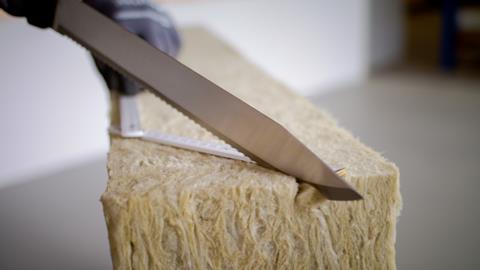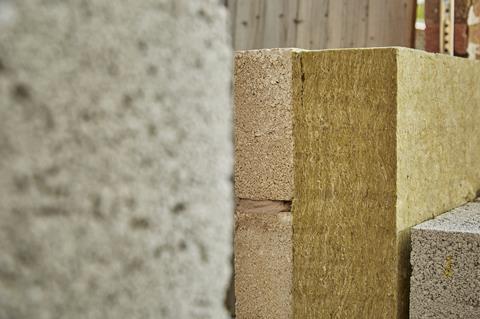James Francis, Product Manager at ROCKWOOL UK, explains why specifiers need to look beyond a single metric when choosing insulation

Historically, insulation choice has often been driven solely by specifying the required U-value. However, as thermal performance requirements become more complex, it’s crucial to specify based on more than just a single metric.
The importance of installation
During installation, common mistakes that can affect the long-term energy performance include gaps forming between insulation, lack of insulation and continuity at junctions, poor insulation installation in lofts, debris and mortar snots in cavity walls and incorrect positioning of windows and doors.
While a small gap might seem insignificant, tests by the BRE in 2008[1] on sample houses showed that features associated with poor workmanship could, in some cases, cause the U-value to rise as much as 310%. A study by Belgian professor Lecompte[2] from 1990 also found that an air gap as small as 6mm is enough to increase heat transfer by 158% of the design value.
Likewise, Approved Document L (ADL) 2021 (England) outlines, “gaps in insulation can have a significant impact on heat loss and thermal bypass and create a risk of condensation and mould” and as such, installers must “ensure the insulation layer is continuous, buildable and robust…”.[3]
While continuity is already best practice for installation, regulatory measures mean there’s now even more pressure to achieve a tighter, continuous fit. As part of ADL 2021 (England), there is now a requirement for photographic evidence at various construction stages before elements are concealed.

For insulation, this equates to proof of thermal continuity l at foundations/structures, external walls, roofs, openings, pipes, and ducts. This evidence should demonstrate that the material is fitted tightly and without gaps.
These examples highlight the importance of and the need to fit insulation effectively. However, achieving a quality installation that will perform long into the future actually starts with the specification.
Why insulation choice matters
The ease of achieving this level of precise fit and, in turn, as-designed performance varies depending on the type of insulation used and selecting a product solely based on its thermal conductivity overlooks this critical consideration.
Pliable insulation can help achieve a tight, continuous fit efficiently as it can be friction-fitted without extensive and precise cutting. Opting for more flexible insulation allows for easier installation at the abutments between insulation boards, another area prone to thermal leakage.
Specifiers also need to think longer term as the thermal performance of some insulation types can diminish over time due to loss of dimensional stability. Choosing a product that retains its manufactured dimensions long-term means the material will not shrink or warp when exposed to high temperatures or humidity and, in turn, create gaps between the insulation and the substrate.

We also recently completed a study with the University of Salford thermal measurement laboratory to investigate the performance of stone wool insulation. The aim was to understand what happens physically when two pieces of ROCKWOOL insulation join together and what impact this has on thermal performance.
Based on independently measured data from the University of Salford, we concluded that when our stone wool slabs are tightly joined together, the edges knit together, providing a continuous insulating layer of trapped pockets of air with no gaps and no associated loss of thermal performance.
What’s more, stone wool has also shown its ability to maintain its shape and density over time. In tests on materials from real-life construction sites, we found that stone wool can retain its insulating properties for more than 65 years[4] without a drop in performance.
By evaluating the performance of insulation based on additional factors, including longevity and ease of achieving a precise fit, housebuilders can build homes efficiently and deliver homes with thermal performance that is proven to last.
Find out more in the
Citations
[1]
[2] J Lecompte: ‘The influence of natural convection on the thermal quality of insulated cavity construction’. ��ɫ����TV research and practice, CIB, 1990
[3] Approved Document L Volume 1, 2021 edition, pg 27
[4]Testing conducted at the Danish Technological Institute in 2023 using ROCKWOOL products taken from an external wall system.

























